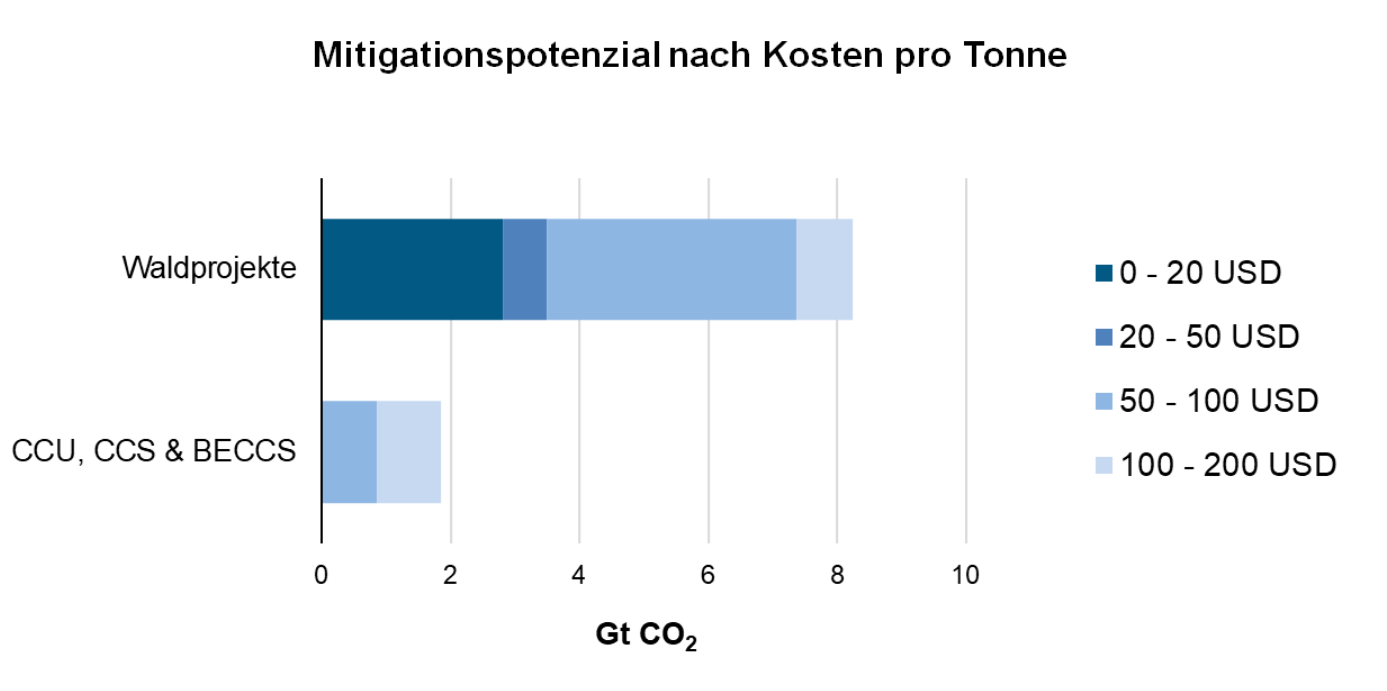
Climate protection through forests: How trees help save the climate
Forests are much more than just picturesque landscapes. They play a central role in the fight against climate change. Thanks to their ability to bind CO₂ from the atmosphere, forest projects are among the most effective natural climate protection measures.
Between 2001 and 2019, forests worldwide stored around 15.6 Gt of CO₂ annually, which corresponded to around 32% of total annual emissions during this period. At the same time, deforestation and other disturbances released around 8.1 Gt of CO₂ annually. (Nature Climate Change, 2021; OurWorldinData, 2024)
At a time when global warming is already having noticeable consequences, they are becoming increasingly important. But not all forest projects are the same. There are different approaches with individual opportunities and challenges. This blog post provides an overview of the most important types of projects, highlights the advantages and disadvantages of forest projects and shows how they can contribute to achieving net-zero targets.
These types of forest projects exist
Afforestation
Afforestation means planting forests on land that was not previously forested. It involves creating new forests that can store CO₂ in the long term.
Reforestation
This involves restoring forests to land that was once forested but has been lost through deforestation or degradation.
Renaturation
Restoring ecological processes to accelerate the recovery of forest structure, ecological functions and biodiversity.
Forest protection
Forest protection projects protect forests from deforestation in order to preserve existing carbon sinks.
Improved forest management
This involves managing existing forests more sustainably, e.g. by extending rotation periods for timber use or reducing interventions. This keeps more CO₂ in the forest.
Agroforestry systems
These projects combine agriculture with tree planting. This increases yields while sequestering CO₂.
Scalability, biodiversity & CO₂ – the advantages of forest projects
Forest projects offer a wide range of advantages. Not only do they sequester CO₂, they also promote biodiversity by creating habitats for numerous animal and plant species. In addition, they provide ecosystem services such as water storage, soil protection and temperature regulation, which are often also climate change adaptation measures.
Compared to negative emission technologies, forest projects are often more cost-effective and quicker to implement. They can reduce around 8.25 Gt CO₂ annually, of which 2.81 Gt CO₂ can be achieved for USD 20 or less. CCU, CCS or BECCS can sequester around 1.85 Gt CO₂ annually, of which 1 Gt CO₂ costs USD 100 or more.

Another advantage is the opportunity to involve local communities, which can generate social and economic spin-offs, such as jobs or sustainable forestry.
Challenges: permanence, additionality and controllability
Despite their many advantages, forest projects are not without challenges. A key weakness is the guarantee of permanence and additionality.
Ensuring permanence: Forests can be destroyed by fire, pests or illegal logging, or dry out due to high temperatures. The amount of CO₂ stored, or rather its storage capacity, would then be lost. These risks increase as climate change progresses.
Additionality is also difficult to guarantee: it requires a solid, project-specific baseline. Determining this can quickly become complicated and expensive due to the high diversity of tree species and ecosystems or a large project area. At the same time, the inherent instability of natural systems makes it difficult to make accurate long-term predictions.
In addition, forest projects can lead to land use conflicts, e.g. when land is used for reforestation instead of food production. Monitoring and verifying such projects is costly, especially in remote regions. False incentives can even be harmful, for example when monocultures are planted or indigenous rights are disregarded.
Do one thing, but don't neglect the other
Despite these challenges, forest projects are an essential part of climate protection due to their ability to store large amounts of CO₂ quickly and cheaply. Even the 2°C target requires a reduction of 28% by 2030 compared to 2023 (UNEP, 2024).
There are now several high-quality forest projects in Switzerland. Their proximity allows for regular quality control through uncomplicated on-site visits. Often, the projects not only contribute to climate protection, but also raise awareness of sustainable land use and nature conservation.
back